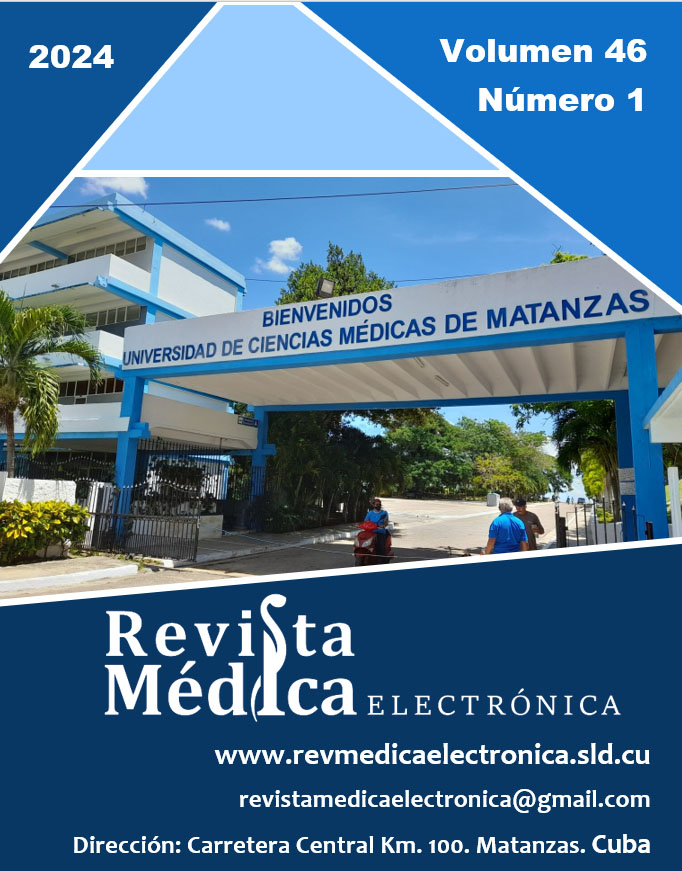Sepsis probada a Klebsiella oxytoca en un recién nacido
Palabras clave:
Klebsiella oxytoca, recién nacido, sepsisResumen
La sepsis neonatal constituye una de las principales causas de muertes neonatales en los países en desarrollo, con datos que estiman más de un millón de muertes en todo el mundo cada año. Se persigue presentar un caso, dada la infrecuencia de la sepsis neonatal tardía por Klebsiella oxytoca. Se trata de una paciente femenina, pretérmino y de bajo peso al nacer, que a los 17 días de vida comenzó con deterioro de su estado clínico dado por hipoactividad, palidez cutánea, succión morosa e incremento de la circunferencia abdominal, acompañados de disfunción hematológica severa dada por anemia, trombocitopenia y neutropenia, que requirió varias transfusiones con hemoderivados y terapéutica antimicrobiana combinada (primero con meronem y amikacina, luego con ciprofloxacina y vancomicina). Se trató también con antifúngicos, diuréticos, drogas vasoactivas, ventilación mecánica y eritropoyetina. Se interconsultó con Cardiología e Infectología pediátricas. Tuvo finalmente una evolución satisfactoria, con lactancia materna efectiva. El incremento de la sepsis en neonatos hospitalizados y la resistencia bacteriana son problemas de salud pública. Es importante reconocer los factores de riesgo para la sepsis en este grupo de pacientes, para su tratamiento oportuno.
Descargas
Citas
2. García Henao JP, García Ríos JM, Naranjo Arango YA, et al. Uso de antibióticos y resistencia antimicrobiana en la unidad de cuidado intensivo neonatal. Rev Méd Risaralda. 2021;27(2). DOI: 10.22517/25395203.24631.
3. Ostia Garza PJ, Salzar Espino B. Frecuencia de factores relacionados con sepsis neonatal. Perinatol Reprod Hum [Internet]. 2022 [citado 23/09/2022];35(1):3-9. Disponible en: https://www.perinatologia.mx/frame_esp.php?id=21
4. Chaurasia S, Sivanandan S, Agarwal R, et al. Neonatal sepsis in South Asia: Huge burden and spiralling antimicrobial resistance. BMJ [Internet]. 2019 [citado 10/02/2023];364:k5314. Disponible en: https://www.ncbi.nlm.nih.gov/pmc/articles/PMC6340339/
5. Sánchez Códez MI, Alonso Ojembarrena A, Arca Suárez J. Gramnegativos infrecuentes como agentes etiológicos de infecciones nosocomiales en una Unidad de Cuidados Intensivos Neonatales. Rev Esp Quimioter [Internet]. 2018 [citado 11/02/2023];31(3):288-90. Disponible en: https://www.ncbi.nlm.nih.gov/pmc/articles/PMC6166260/
6. Rosete Enríquez M, Quintero Hernández V, Morales García Y, et al. La personalidad multifacética del género Klebsiella: El bueno, el malo y el feo. AyTBUAP [Internet]. 2019 [citado 11/02/2023];4(15):16-35. Disponible en: https://repositorioinstitucional.buap.mx/items/5064e120-8890-4195-9e16-8f3270b841a3
7. Yang J, Long H, Hu Y, et al. Klebsiella oxytoca Complex: Update on Taxonomy, Antimicrobial Resistance, and Virulence. Clin Microbiol Rev. 2022;35(1). DOI: 10.1128/CMR.00006-21.
8. Mendoza A, Osorio M, Fernández M, et al. Tiempo de crecimiento bacteriano en hemocultivos en neonatos. Rev Chil Pediatr [Internet] 2015 [citado 12/02/2023];86(5):337-44. Disponible en: https://www.scielo.cl/pdf/rcp/v86n5/art06.pdf
9. Liébana Rodríguez M, Recacha Villamor E, Díaz Molina C, et al. Outbreaks by Klebsiella oxytoca in neonatal intensive care units: Analysis of an outbreak in a tertiary hospital and systematic review. Enferm Infecc Microbiol Clin. 2023. DOI: 10.1016/j.eimce.2023.04.018.
10. Herruzo R, Ruiz G, Gallego S, et al. VIM-Klebsiella oxytoca outbreak in a Neonatal Intensive Care Unit. This time it wasn't the drain. J Prev Med Hyg. 2017;58(4):302-7. Citado en PubMed; PMID: 29707661.
11. Márquez Herrera K, Rojas Vega A, Camacho Moreno G. Caracterización de pacientes con aislamiento de Klebsiella productora de carbapenemasa en un hospital pediátrico de tercer nivel de Bogotá, Colombia. Infectio [Internet]. 2016 [citado 12/02/2023];20(4):231-7. Disponible en: https://www.sciencedirect.com/science/article/pii/S0123939216000060/pdfft?md5=16d57e7ca37410ef7743b46f744fb192&pid=1-s2.0-S0123939216000060-main.pdf
12. Ulloa-Ricárdez A, Salazar-Espino B. Epidemiología de infección neonatal temprana y tardía en una Unidad de Cuidados Intensivos Neonatales. Rev Hosp Jua Mex [Internet]. 2019 [citado 12/02/2023];86(3):110-5. Disponible en: https://www.medigraphic.com/pdfs/juarez/ju-2019/ju193b.pdf
Publicado
Cómo citar
Número
Sección
Licencia
La misma permite:
• Copiar y redistribuir el material publicado en cualquier medio o formato.
• Adaptar el contenido.
Esto se realizará bajo los siguientes términos:
• Atribuir los créditos de los autores e indicar si se realizaron cambios, en cuyo caso debe ser de forma razonable.
• Uso no comercial.
• Reconocer la revista donde se publica.
Se mantienen los derechos de autoría de cada artículo, sin restricciones.







